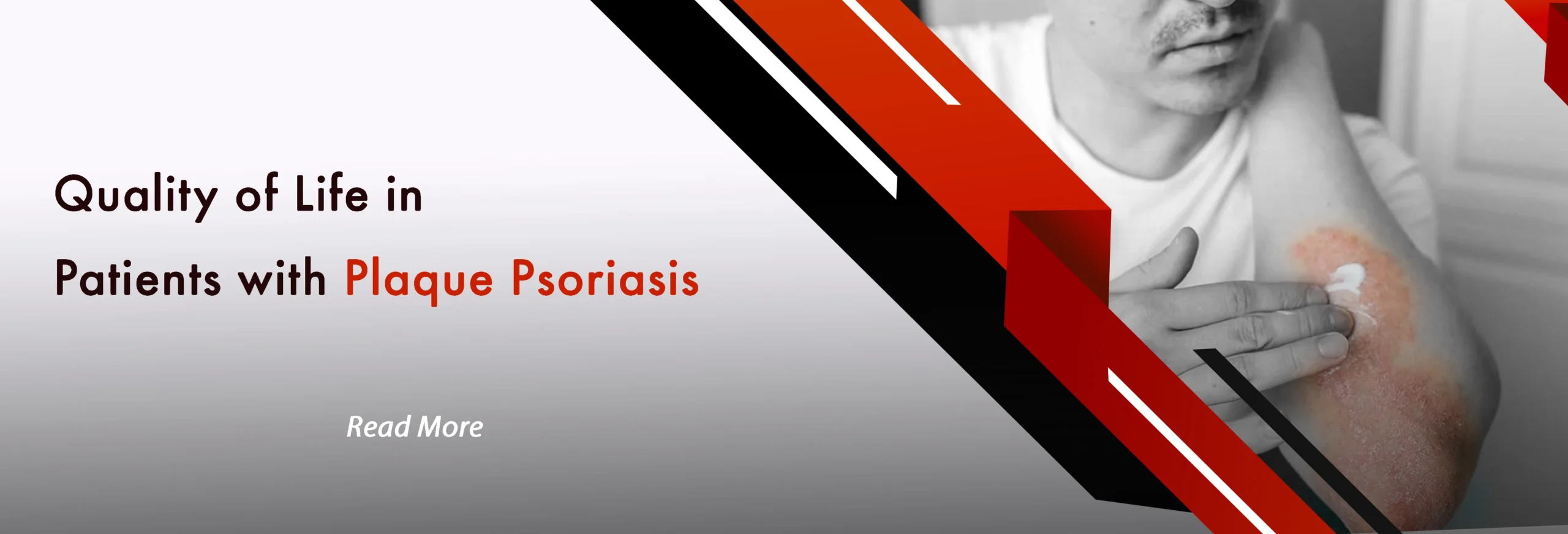
Plaque psoriasis is a chronic autoimmune skin condition characterized by red, raised, and scaly patches called plaques. Dermatologists, specializing in diagnosing and treating skin conditions like psoriasis, are typically the best-recommended physicians for this condition. They offer a range of treatment options, including topical medications, phototherapy, systemic medications, and biologic therapies, tailoring treatment plans to suit individual needs and monitoring progress over time. Primarily seen in adults, childhood-onset psoriasis is also increasingly reported, with about one in three individuals having a family history. Screenings have identified clinical and histopathological characteristics that overlap with other chronic inflammatory skin conditions, such as atopic dermatitis, lichen planus, and erythrosis.
Psoriasis can be categorized into several types, including psoriasis vulgaris, seborrheic psoriasis, pustular psoriasis, and guttate psoriasis. The condition can arise from allergic reactions, excessive stress, or even certain medications. Psoriasis can affect various body parts, such as the hands and feet (plantar psoriasis), the body (back, abdomen, chest), and nails. Scalp psoriasis affects the skin on the head, forehead, neck, and ears. Often misdiagnosed as dermatitis or eczema, psoriasis requires a dermatologist’s expertise for accurate diagnosis and proper treatment. Symptoms include red spots and scales, itching, burning sensations, skin tension, nail changes, joint and tendon pain, swelling, and dandruff, particularly on the scalp.
Psoriasis is linked to the inheritance of genes from the major histocompatibility complex (MHC), particularly those encoding HLA antigens. The genetic underpinnings of psoriasis are under intensive study, with researchers focusing on specific familial syndromes and animal models. T cells, resting memory T cells, and dendritic cells in lesions play crucial roles in the disease’s pathophysiology. Proinflammatory cytokines, such as TNF and IL-17, act on keratinocytes to regenerate and produce antimicrobial peptide proteins in skin lesions. Genetic and environmental factors also contribute to the disease, with insights into these mechanisms leading to new therapeutic targets.
Psoriasis is associated with various comorbidities, including metabolic syndrome. Elucidating the pathophysiology of these conditions can lead to new treatments. The disease is prevalent worldwide, with the European Union and the United States reporting prevalences of 0.6% and 2.5%, respectively. However, prevalence varies by region. Patients often seek medical attention when symptoms become problematic. A thorough medical history and physical examination are crucial for proper diagnosis and treatment. It is important to identify any family history of psoriasis, arthritis, psoriatic arthritis, and other chronic diseases.
Symptoms of psoriasis include pruritus, burning sensations, and chronic, relapsing lesions. Histopathological features include epidermal hyperplasia, parakeratosis, and neutrophilic surface scales. The Koebner phenomenon, where new plaques develop at trauma sites, is notable. Diseases to be excluded in diagnosis include tineas, pityriasis rubra pilaris, drug eruptions, eczematous dermatitides, and benign familial chronic pemphigus. Psoriasis results from an immune system problem involving T cells and other white blood cells, leading to rapid skin cell turnover and inflammation.

Skyrizi has been a game-changer in treating plaque psoriasis. Unlike other treatments that require frequent dosing, Skyrizi’s 12-week administration schedule is convenient for many patients. However, its high cost—around $16,000 per dose—poses a significant barrier, especially for those without adequate insurance. Insurance coverage and patient assistance programs are crucial for making Skyrizi accessible. In comparison, older systemic medications like methotrexate or cyclosporine cost significantly less, ranging from $25 to $500 per month, but they often come with more severe side effects and less effective long-term management.
The high cost of biologics like Skyrizi highlights the challenges in plaque psoriasis treatment. Prices for these advanced therapies can reach several thousand dollars per dose. For instance, another biologic, Humira, costs around $5,500 per dose without insurance. These high costs can limit access, emphasizing the importance of insurance coverage and patient assistance programs. Efforts are ongoing to develop biosimilars—affordable alternatives to biologics—that could provide more cost-effective options. Despite advancements, ensuring all patients can access effective treatments remains a critical challenge in managing plaque psoriasis.
In addition to Skyrizi, there are other biologic options for treating plaque psoriasis that may be more affordable or suitable for certain patients. For example, Humira (adalimumab) is a well-known TNF inhibitor used to treat moderate to severe psoriasis. The cost of Humira is approximately $5,500 per dose without insurance, and it is administered biweekly. Another option is Enbrel (etanercept), also a TNF inhibitor, which costs around $4,500 per dose and is typically injected weekly. Both medications have been effective for many patients but come with their own set of side effects and require more frequent dosing compared to Skyrizi.
Stelara (ustekinumab) is another biologic alternative, targeting both IL-12 and IL-23. It is administered every 12 weeks after two initial doses four weeks apart, similar to Skyrizi. The cost of Stelara is about $10,000 per dose, making it a less expensive option than Skyrizi but still significantly costly. Other treatments like Taltz (ixekizumab) and Cosentyx (secukinumab) target IL-17A and cost around $6,500 per dose, with dosing schedules of every four weeks after initial loading doses. While these biologics provide effective symptom relief, their high prices highlight the financial burden for patients, emphasizing the need for comprehensive insurance coverage and assistance programs to ensure accessibility.
Effective management of plaque psoriasis involves a combination of self-care and appropriate treatment plans. While there is no cure, various treatment options, including topical treatments like corticosteroids and vitamin D analogs, can help manage symptoms. Topical retinoids, although effective, often require combination with other treatments to minimize side effects and improve efficacy. Recent decades have seen a better understanding of the disease’s pathologic mechanisms, leading to the development of pharmacologic and biologic agents that can significantly reduce disease severity and provide remission for some patients.
Overall, plaque psoriasis is a complex, multisystem disease requiring diligent self-care and appropriate treatment. While many treatment options are available, long-term management is necessary to prevent recurrence. Current research focuses on understanding the disease’s pathophysiology and exploring novel treatment strategies, such as probiotics. The future of plaque psoriasis treatment looks promising, with advancements in biologics and other therapies offering hope for better management and improved quality of life for patients.
Relevant links:
https://youtu.be/_zxcDokmaFQ?si=RcrVgWtoJx7DTcch
https://www.ncbi.nlm.nih.gov/books/NBK430879/
https://youtu.be/jjy8eAiOC1U?si=PEOkhStE9ZbGXFFW
https://youtu.be/ePX_suB4DDQ?si=LxxsfO8e1xfNsS0l
Opening Hours:
24/7
Address: Tradex Mena International Consulting Group L.L.C-FZ 6th Floor, Business Center, The Meydan Hotel Grandstand, Meydan Road, Nad Al Sheba, Dubai, United Arab Emirates
+971 50 240 9735
Address: TRADEX INTERNATIONAL CONSULTING DANIŞMANLIK
itH. iHr. ve TiC. LTD. ŞTi.
Tomtom Mah. istiklal Cad. Beyoğlu iş Merkezi No.187 iç Kapr No: 4 Beyoğlu/iSTANBUL Beyoğlu V.D. 8591125255